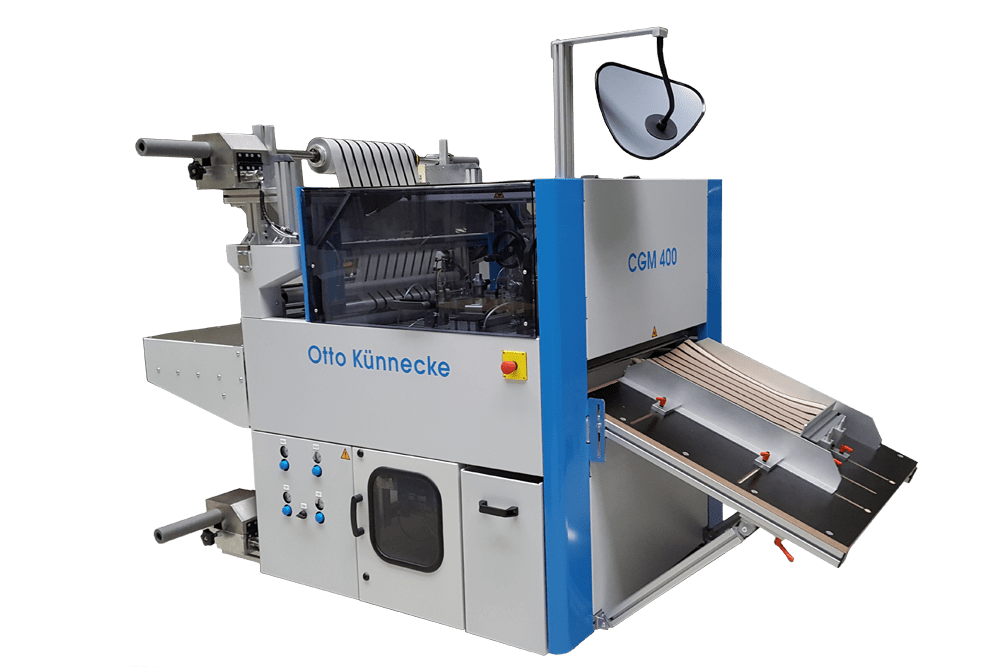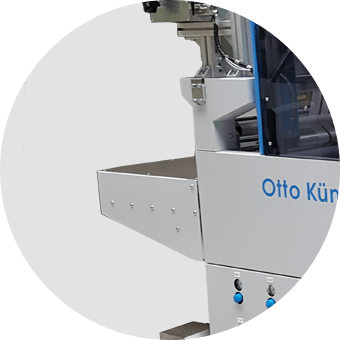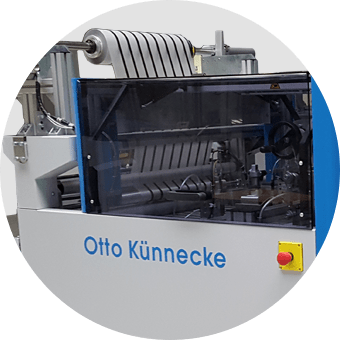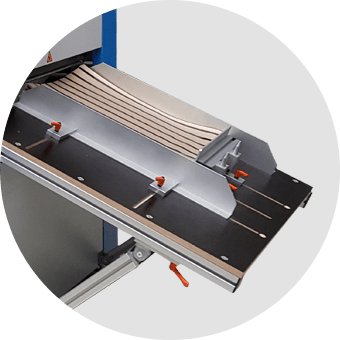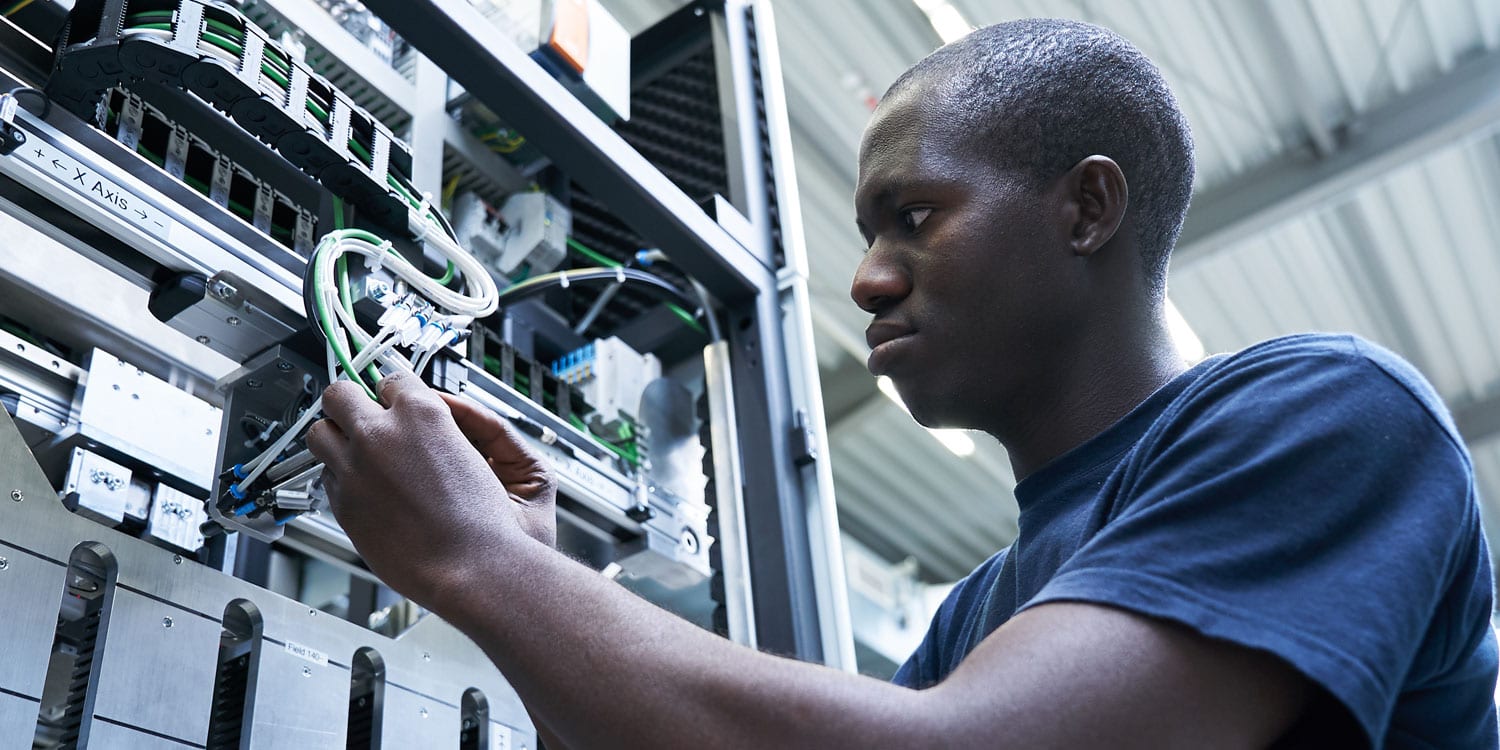In the first segment of the machine one or several core sheets are placed by the operator on the collating table and are aligned to the head limit stop and side limit stop. Subsequently, the core film set is welded together by the welding heads. The go-ahead for the welding process can be by hand or be previously fixed in the machine programming for a certain time. Optional quality checks like the transmitted light screening function to check for internal objects, the UV printing check to read information which may have been added with UV ink, or a QR code reader to check coherence of the upper and lower sheet, all provide for maximum product safety before subsequent treatment and therefore prevent unnecessary material waste. Optional vision systems visually examine printed markings and check whether these correctly lie on top of each other. If Magtape is being processed, optional cameras can check the exact distance between the tape and printed markings, so that also here no faulty positionings can lead to a useless end product. If requested, missing, or mistakenly twice-introduced, core sheets can be recognised by way of a thickness check even before the welding takes place.






